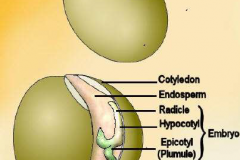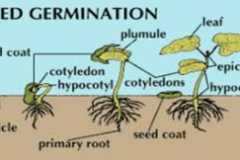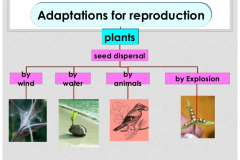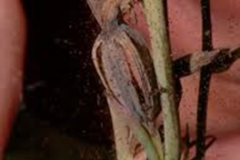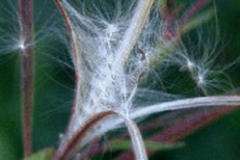Plants make seeds that can grow into new plants, but if the seeds just fall to the ground under the parent plant, they might not get enough sun, water or nutrients from the soil. Because plants cannot walk around and take their seeds to other places, they have developed other methods to disperse (move) their seeds. The most common methods are wind, water, animals, explosion and fire.
Wind dispersal
Have you ever blown on a dandelion head and watched the seeds float away? This is wind dispersal. Seeds from plants like dandelions, swan plants and cottonwood trees are light and have feathery bristles and can be carried long distances by the wind. Some plants, like kauri and maple trees, have ‘winged’ seeds. They don’t float away but flutter to the ground. With wind dispersal, the seeds are simply blown about and land in all kinds of places. To help their chances that at least some of the seeds land in a place suitable for growth, these plants have to produce lots of seeds.
Water dispersal
Many plants have seeds that use water as a means of dispersal. The seeds float away from the parent plant. Mangrove trees live in estuaries. If a mangrove seed falls during low tide, it can begin to root in the soil. If the seeds fall in the water, they are carried away by the tide to grow somewhere else. Kōwhai trees also use water dispersal. They have a hard seed coat that allows them to float down streams and rivers. That is one of the reasons kōwhai trees are commonly found on stream banks.
Animal dispersal
Over 70% of plants in our woody forests in New Zealand have fleshy fruit that is eaten by birds. Chemicals in our native birds’ digestive systems help to weaken the tough coats around these seeds. Birds often fly far away from the parent plant and disperse the seeds in their droppings. The kererū, tūī and bellbird play an important role in seed dispersal. Trees that produce the largest fruit – miro, pūriri, tawa and taraire – rely on the kererū because it has such a large, wide beak to eat the fruit.
Some seeds have hooks or barbs that catch onto an animal’s fur, feathers or skin. Plants like pittosporum have sticky seeds that can be carried away by birds. Humans can also spread seeds if they get stuck to our clothing or shoes – and if we throw fruit pips and stones out of the car window!
Explosions
This method of seed dispersal isn’t quite as exciting as it may sound. Some plants, like peas, gorse and flax, have seedpods that dry out once the seeds are ripe. When dry, the pods split open and the seeds scatter. If you’re lucky, on a hot summer day when you walk by a gorse bush, you will hear the gorse seedpods popping open.
Fire
Plants cannot run away from a fire so some plants have developed a way to help their seeds survive. There are some species of pine tree that require the heat from a fire before their cones will open and release seeds. Banksias, eucalypts and other Australian plants also rely on fire. The intensity and timing of the fire is important. It needs to be hot enough to trigger the cones to open, but if fires are too frequent, there is not enough time for the plants to grow big enough to make new seeds.
Adaptation and seed dispersal
Adaptation is an evolutionary process that helps an organism make the most of its habitat. Seed dispersal is an example of adaptation. Fires are common in Australia, so some plants have adapted and become well suited to make the most of it. Mangrove trees have seeds that float, making the most of their watery environment.







